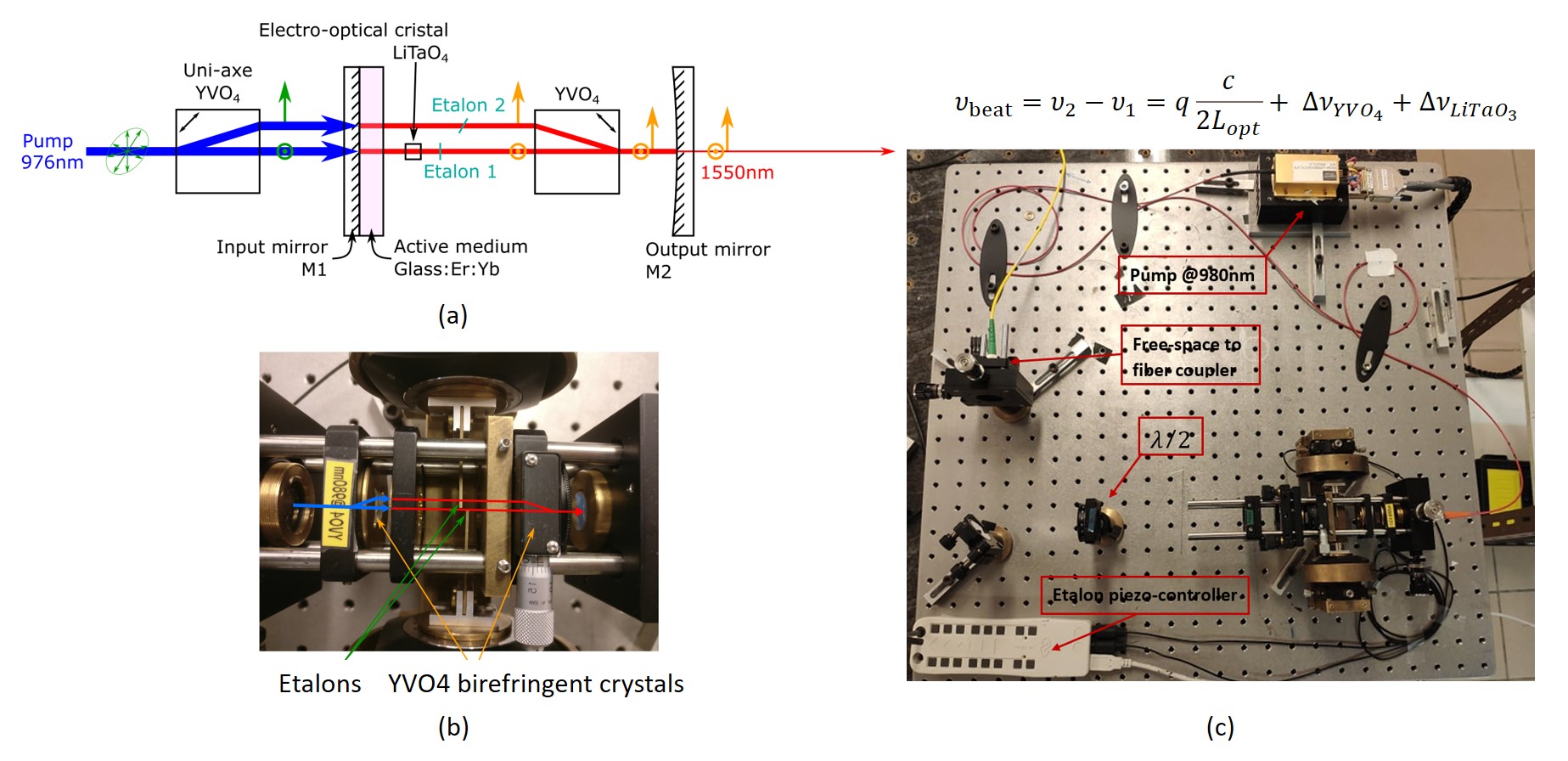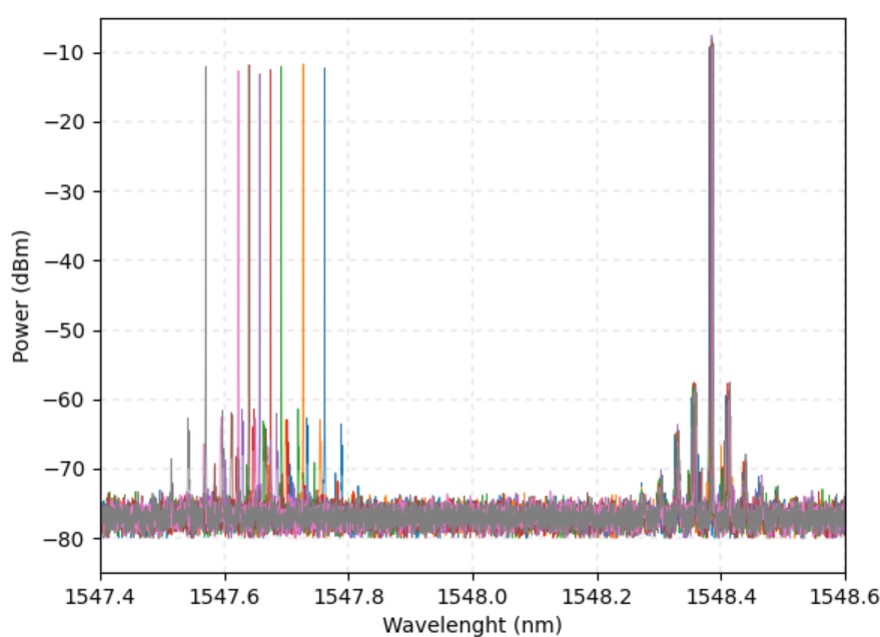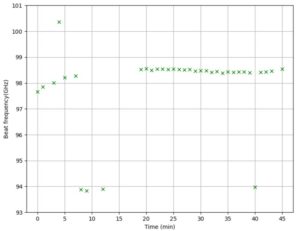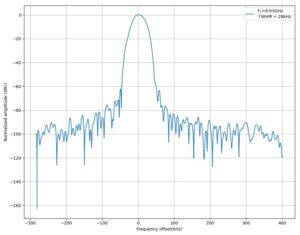To meet the ambition of demonstrating a sub-THz link with multibeam and beam-steering capabilities, the photonic system has to include three main building blocks:
- a photonic beat note generator
- a modulation subsystem which up-converts the signal from the microwave domain to the optical domain and
- a tunable true-time delay matrix which enables the antenna array to receive the targeted phase law.
The following results concern the beat note generation. It generally relies on a rather conformist approach which offers simplicity at the expense of performance. In the simplest case, the photonic beat note generator is composed of two lasers with a frequency difference corresponding to the sub-THz carrier frequency [1]. The frequency of each laser has to be extremely stable to guarantee a beat note of the sub-THz carrier complying with transmission constraints. As an alternative and more reliable solution, we propose a single laser that sustains the oscillation of the two wavelengths. Such dual-frequency laser (DFL) offers intrinsic stability of the sub-THz beat note as the two oscillating frequencies share the same optical cavity. Consequently, the frequency fluctuations originating from the cavity fluctuations are experienced by two modes and thus canceled out in the sub-THz beat note [2]. Fig. 1 shows the scheme of the proposed DFL.

Fig. 1 (a) Functional scheme of the DFL, (b) Implementation of DFL, (c) Laboratory set-up at Institut Foton
The following figures present the obtained results. Fig. 2 shows the tunability of the two optical tones in the W-band (from 75 to 110 GHz). Next, Fig. 3 presents the free-running stability of the DFL and Fig. 4 showcases the typical SNR and line-width of the beat-tone. Although the detection has been carried out at 8.94 GHz (available photo-detector up to 10 GHz), the same performance can be obtained at higher frequencies.
In conclusion, we have developed a functional and highly tunable mm-wave source (almost from DC to THz), which free running stability is largely satisfying for an OOK modulation, after thermalization. Moreover, owing to frequency and phase stabilization, beat tones with 1Hz line-width can be elicited for future complex M-QAM modulation.
- T. Nagatsuma, G. Ducournau, and C. C. Renaud, “Advances in terahertz communications accelerated by photonics” Nature Photon. vol. 10, pp. 371–379, 2016.
- A. Rolland et al., “Narrow linewidth tunable terahertz radiation by photomixing without servo-locking,” IEEE Trans. THz Sci. Technol., vol. 4, no. 2, pp. 260-266, March 2014.




